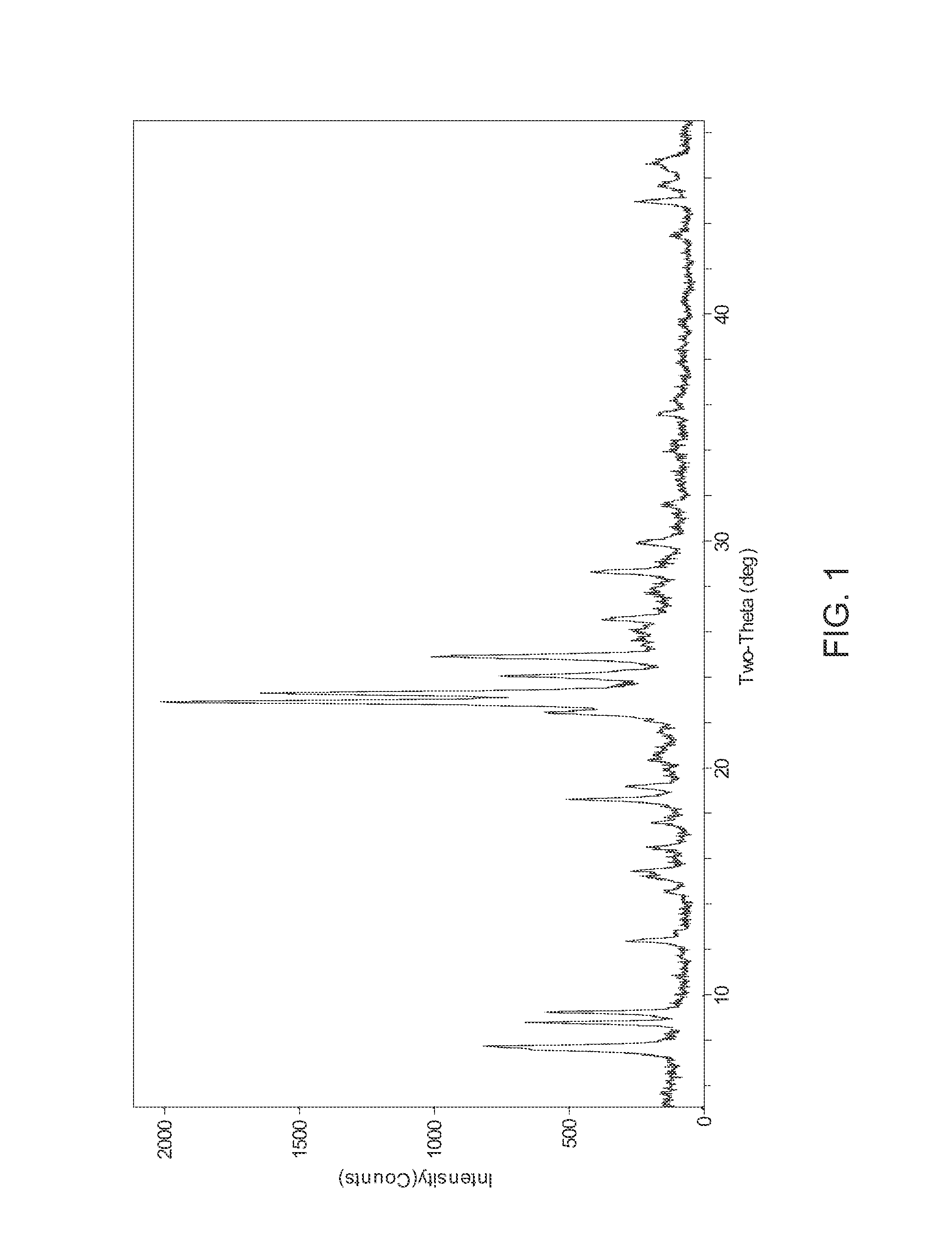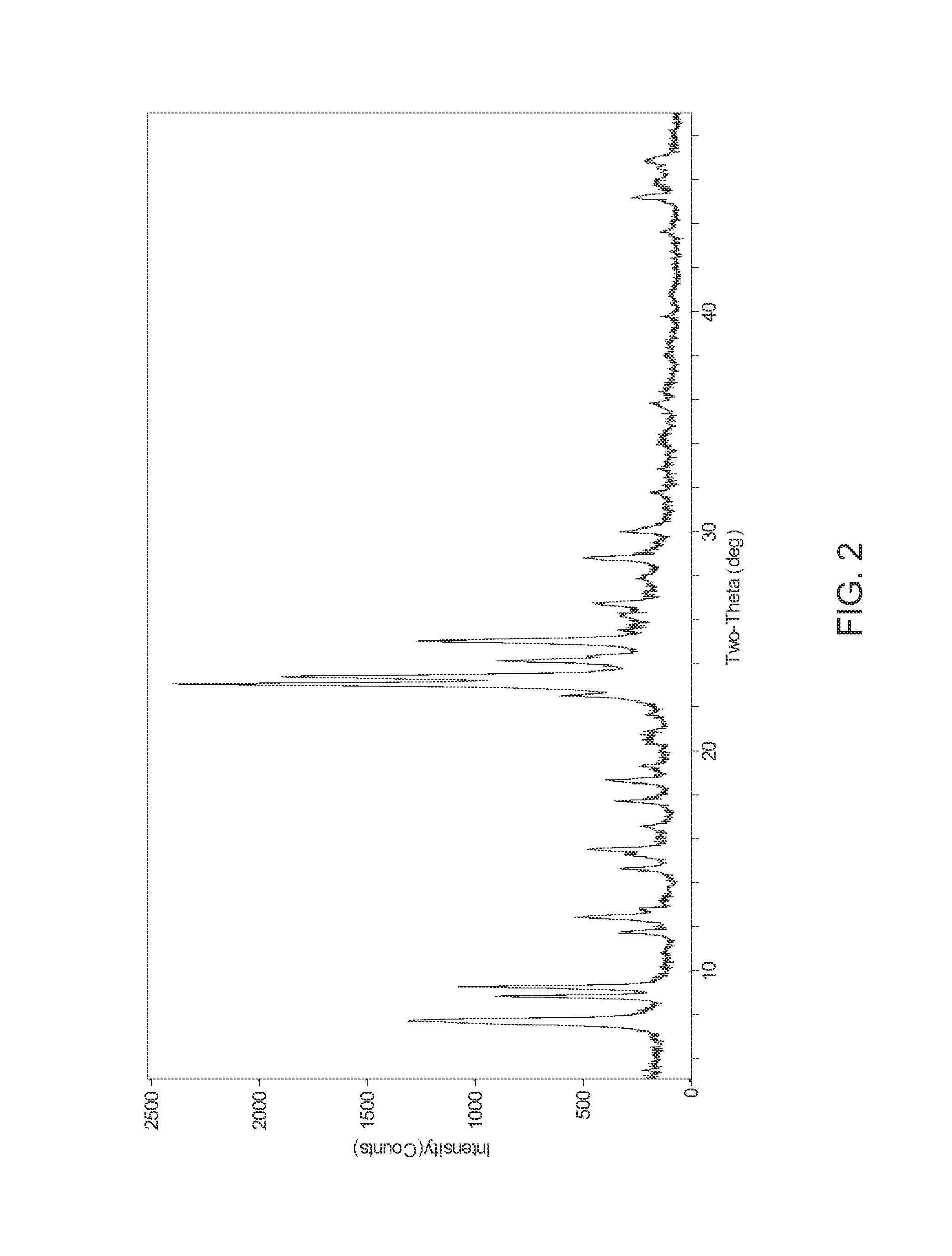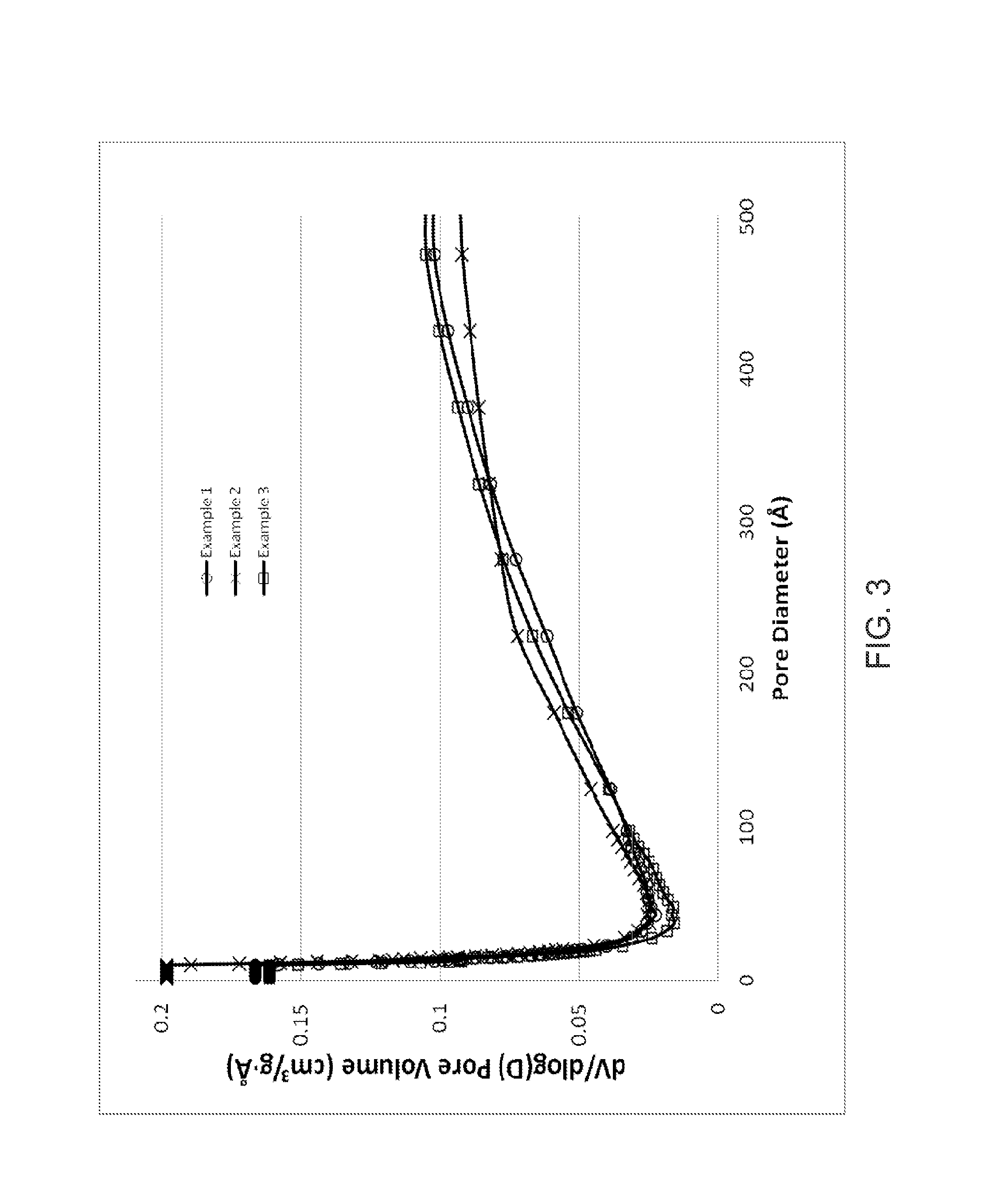Catalytic pyrolysis using UZM-44 aluminosilicate zeolite
a technology of aluminosilicate zeolites and catalytic pyrolysis, which is applied in the field of new family of aluminosilicate zeolites, can solve the problem of limited diffusion of hydrocarbons from oxygen organic compounds
- Summary
- Abstract
- Description
- Claims
- Application Information
AI Technical Summary
Benefits of technology
Problems solved by technology
Method used
Image
Examples
example 1
[0053]5.28 g of NaOH, (97%) was dissolved in 111.88 g water. 1.16 g Al(OH)3, (29.32 wt.-% Al), was added to the sodium hydroxide solution. Upon the mixture becoming a solution, 33.75 g Ludox AS-40 was added and the solution was stirred vigorously for 1-2 hours and then cooled to 0° C.-4° C. Separately, 8.89 g 1,5-dibromopentane, (97%) was mixed with 9.56 g 1-methylpyrrolidine, (97%) to form a second mixture. The second mixture was added to the cooled mixture to create the final reaction mixture. The final reaction mixture was vigorously stirred and transferred to a 300 cc stirred autoclave. The final reaction mixture was digested at 170° C. for 120 hours with stirring at 100 rpm. The product was isolated by filtration. The product was identified as UZM-44 by XRD. Analytical results showed this material to have the following molar ratios, Si / Al of 11.77, Na / Al of 0.21, N / Al of 1.02, C / N of 7.75. The product generated by this synthesis was calcined under flowing air at 600° for 6 hour...
example 3
[0055]544 g of NaOH, (97%) was dissolved in 9.53 kg water. 118 g Al(OH)3 was added to the sodium hydroxide solution while stirring. Of Ludox AS-40, 3.83 kg was added and the solution was stirred vigorously for 2 hours and then cooled to 0° C.-5° C. A solution containing 941 g H2O, 453 g 1,5-dibromopentane and 325 g N-methylpyrrolidine was added to the cooled mixture to create the final reaction mixture. The final reaction mixture was vigorously stirred and transferred to a 5 gallon stirred autoclave before digestion at 160° C. for 11 days. The product was isolated by filtration. The product was identified as UZM-44 by XRD. Analytical results showed this material to have the following molar ratios, Si / Al of 11.77, Na / Al of 0.21, N / Al of 1.02, C / N of 7.75. The product generated by this synthesis was calcined under flowing air at 600° for 6 hours. Analysis for the calcined sample shows a BET surface area of 301 m2 / g, pore volume of 0.238 cm3 / g, and micropore volume of 0.142 cm3 / g.
example 4
[0056]A UZM-44 in the H+ form was loaded into a vertical steamer. The UZM-44 was exposed to 100% steam at 725° C. for 12 hours or 24 hours. The starting UZM-44 had a BET surface area of 340 m2 / g, pore volume of 0.301 cm3 / g, and micropore volume of 0.154 cm3 / g. After 12 hours of steaming, the UZM-44 was still identified as UZM-44 by XRD though the intensity of the first 3 peaks had increased to very strong, very strong-strong, and very strong-strong respectively. All other peaks were at positions and intensities described in Table B. The material had a BET surface area of 274 m2 / g, pore volume of 0.257 cm3 / g, and micropore volume of 0.127 cm3 / g. After 24 hours of steaming, the UZM-44 was still identified as UZM-44 by XRD though the intensity of the first 3 peaks had increased to very strong, very strong-strong, and very strong-strong respectively. All other peaks were at positions and intensities described in Table B. The material had a BET surface area of 276 m2 / g, pore volume of 0....
PUM
| Property | Measurement | Unit |
|---|---|---|
| mole ratio | aaaaa | aaaaa |
| mole ratio | aaaaa | aaaaa |
| mole ratio | aaaaa | aaaaa |
Abstract
Description
Claims
Application Information
 Login to View More
Login to View More - R&D
- Intellectual Property
- Life Sciences
- Materials
- Tech Scout
- Unparalleled Data Quality
- Higher Quality Content
- 60% Fewer Hallucinations
Browse by: Latest US Patents, China's latest patents, Technical Efficacy Thesaurus, Application Domain, Technology Topic, Popular Technical Reports.
© 2025 PatSnap. All rights reserved.Legal|Privacy policy|Modern Slavery Act Transparency Statement|Sitemap|About US| Contact US: help@patsnap.com



